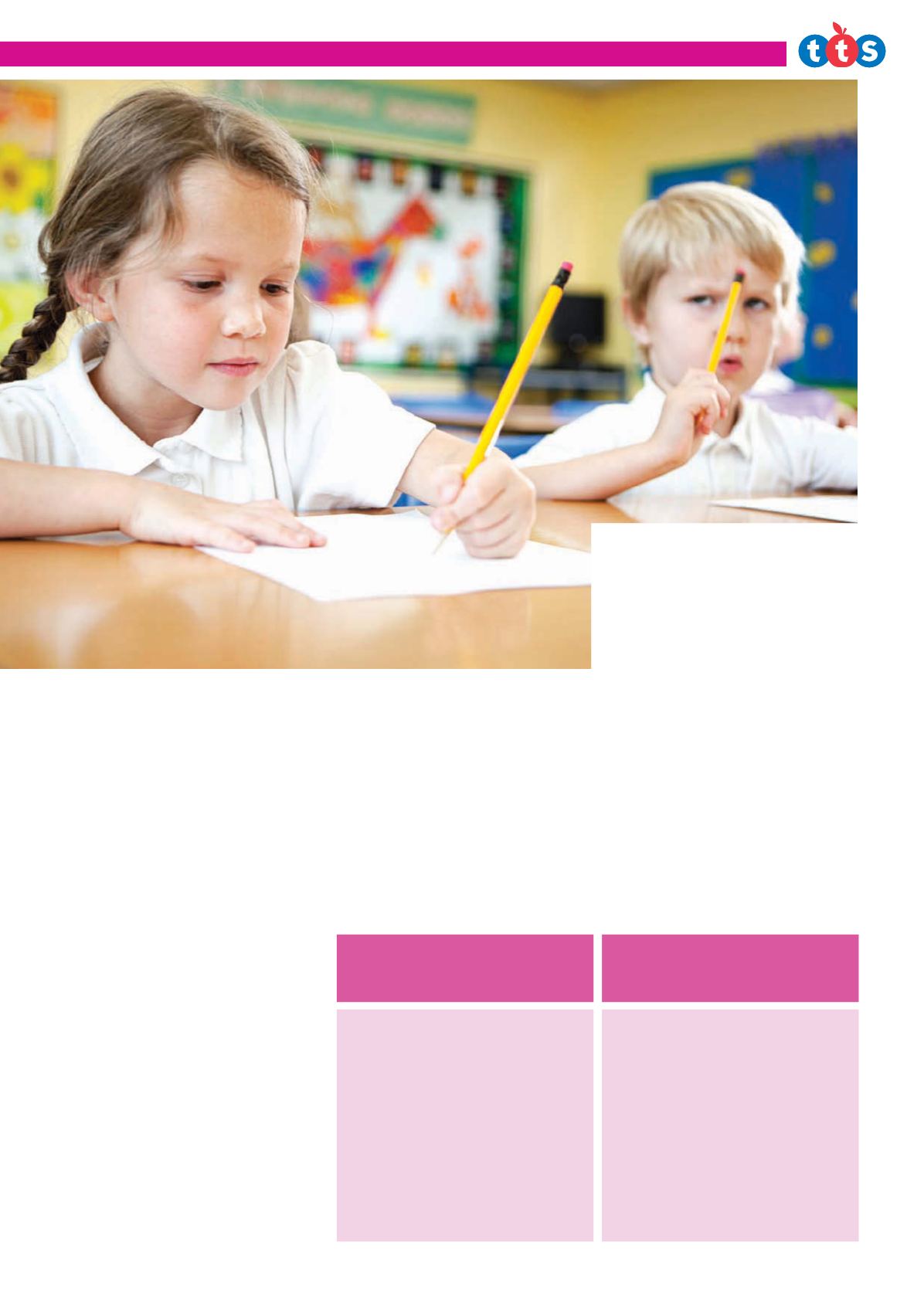
In association with
TEACH READING & WRITING
77
■
‘Circle all the full stops that are in
thewrong places’
Teachers can challenge pupils by asking
themto rewrite, write or explain the
grammar and punctuation they have used.
7
Connectivesareout
Within the programmes of study
for English, pupils learn the full range
of what used to be called connectives in
Year 3. These have nowbeen broken
down into conjunctions, adverbs and
prepositions. However, within the KS1
grammar test, conjunctions are called
‘joining words’. Pupils can be exposed to
the term ‘joining words’ in KS1 as they do
not need to know the term ‘conjunction’
until Year 3.
8
Usethecorrect
terminology
To stress the point, it’s now time to let
go of time connectives! (E.g. first, second,
next, etc.) Frompresenting at conferences
across the country, I know that teachers
love them. Despite this, the term ‘adverb’
is nowa statutory termfor Year 2, sowhat
were ‘connectives’ aremainly called adverbs
of time – or time adverbs.
9
Notallverbs
are‘doing’words
That pupils should understand ‘doing’
verbs and ‘being’ verbs is not really explicit
in theNational Curriculum, but children do
need to be familiar with ‘being’ verbs such
as: is, am, was and are, etc. (Thiswas seen in
the 2016 paper). In addition, this is a great
way to teach present and past tense so that
pupils are able to apply this knowledge to
their writing.
10
Thedifference
betweenexclamation
marksand
exclamations!
Perhaps themost controversial aspect of
the KS1 grammar test was the introduction
of exclamations as a type of sentence /
phrase. This is because these types of
sentences do not appear to bewithin the
vernacular ofmanyYear 2 pupils. Themost
salient point to note here is that pupils
need to know the difference between the
exclamationmark and the exclamation as a
type of sentence or phrase. According to the
national curriculum, exclamationsmust start
with ‘what’ or ‘how.’ Be careful! Pupils need to
be able towrite exclamations (with verbs) to
be at the expected standard inwriting by the
end of KS1.
EXCLAMATIONMARK
EXCLAMATION
(as a type of sentence
or phrase using ‘what’ or ‘how’)
Get out!
(This is a command using an exclamation
mark to express amood/surprise etc.)
I amhappy today!
(This is a statement using the exclamation
mark to express amood/surprise etc.)
Hey!
(This is an interjection using the exclamation
mark to express amood / surprise etc.
Pupils do not need to know this term.)
What a lovely painting you have!
Howexciting itmust be for you!
(These are exclamations as types
of sentences using verbs, e.g.
‘must’, ‘be’ and ‘have’.)
Howexciting!
(This is an exclamative phrase
because it does not have a verb.)


